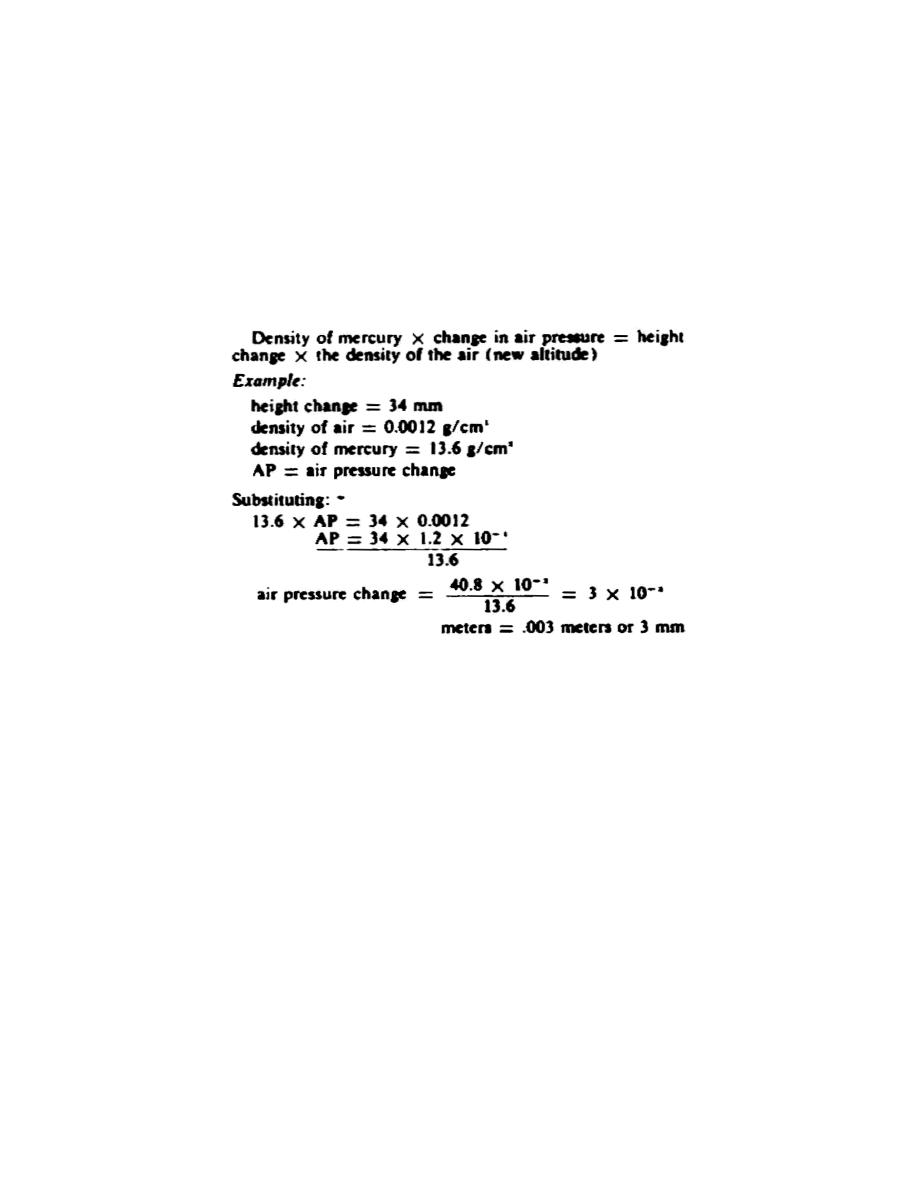
SM0486
c. Because the atmosphere is heavier at sea level that at points above sea
level, the standard pressure of one atmosphere (l4.7 lbs/in2 at 0 Celsius) exists
for sea level only.
As the measuring instrument is moved from sea level to a
location above sea level, the level of mercury in a tube drops from 30 inches (76
cm or 760 mm) because the weight of the air above the tube becomes less as the
height increases. The decrease in the weight of air is indicated by a decrease in
atmospheric pressure.
d. The change in atmospheric pressure can be calculated if the total change
in height and the density of the air at the new location are known. You use the
following equation:
e. If the density of air is not known, divide the increase in height
(converted to feet) by 90 and multiply the quotient by 0.1. The answer represents
the number of inches of drop in the column of mercury. This means that the mercury
in the inverted glass tube of Figure 4 drops 0.1 inch for every 90-foot increase in
altitude, as shown in Figure 5.
50



 Previous Page
Previous Page
